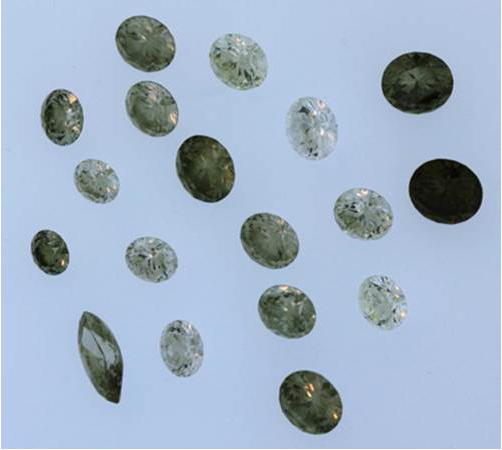New York Lab Issues Warning About Harder to Detect CVD Diamonds
Post Date: 14 Aug 2013 Viewed: 406
The New York-based gemological lab Analytical Gemology & Jewelry (AG&J) has issued a warning about harder to detect CVD diamonds being sold as natural, type IIa brown stones.
A batch of these stones was recently submitted by a client as natural HPHT-treated diamonds and contained 75 percent CVD-grown HPHT-treated diamonds. The stones were purchased from a trade source with which the client had a long-standing business relationship.
The AG&J laboratory specializes in the identification of diamonds and their treatments. It is reporting a new alarming find with permission from their client, a U.S. gem dealer specializing in HPHT treated diamonds, with more than a decade of experience.

AG&J determined that a batch consisting of 18 (17 round and one marquise-cut) diamonds weighing a total of six carats, ranging in size from 0.14-carat to 0.635mm, color ranging from F to gray and a clarity range from VVS to SI, was submitted to the lab at the end of July 2013. Identification was done with its proprietary diamond testing system, which can also be used to test melee diamonds, as previously reported. AG&J identified 13 CVD grown HPHT treated synthetic diamonds.
The stones were purchased on the open market in Mumbai as type IIa brown diamonds. The buyer used a portable FTIR instrument to test the stones during the purchase and to make sure he only buys diamonds that are type IIa or very low nitrogen type Ia stones intended for HPHT treatment. The HPHT treatment was done at a facility by means of a cubic press, using undisclosed parameters. AG&J were, nevertheless, able to conclude from their tests that the HPHT facility tried to enhance the color by using a range of different time and temperature parameters.
The client grew suspicious after the HPHT treatment did not give the expected results. Several stones from the parcel turned a gray color, while the highest color was only I. After submission to AG&J, it turned out that 13 of the 18 stones were CVD-grown HPHT treated synthetic diamonds.
The CVD stones were also produced using different parameters and reactors which supports the conclusion that they came from different factories, indicating that the number of facilities for CVD diamonds is growing rapidly. According to AG&J’s experience, their research database but also reports from other researchers, none of the 13 diamonds came from the Gemesis production line.
"It was not surprising that the client could not detect the CVD diamonds using FTIR spectroscopy,” said AG&J's CEO, Dusan Simic, “as this requires more sophisticated methods that also have to keep up with changes in the production of CVD and HPHT-grown stones as well as all treatments.”
Responding to the trade’s concern about rapidly growing occurrences of synthetic and treated diamonds mixed in natural batches, and in mounted jewelry, AG&J developed a system for batch testing diamonds accurately in a cost-effective way. The system is based on internationally accepted diamond identification methods, such as: Raman spectroscopy, absorbance measurement in the UV-VIS-NIR range, and FTIR and Photoluminescence.



